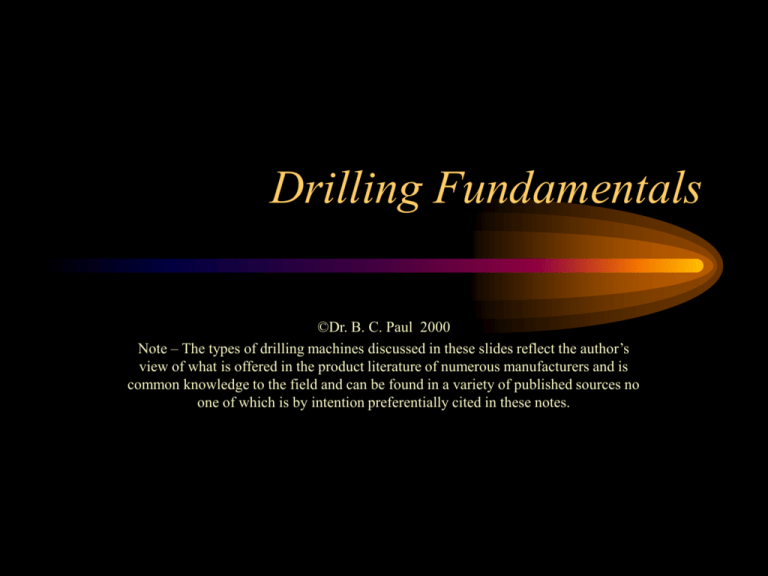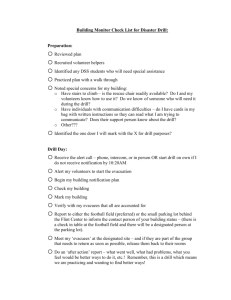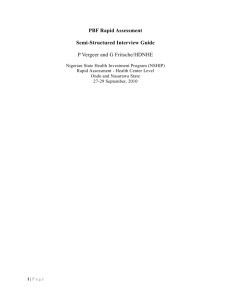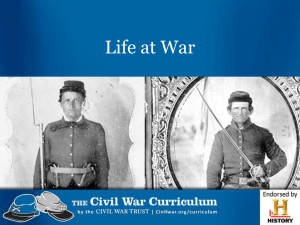Drilling Fundamentals
advertisement

Drilling Fundamentals ©Dr. B. C. Paul 2000 Note – The types of drilling machines discussed in these slides reflect the author’s view of what is offered in the product literature of numerous manufacturers and is common knowledge to the field and can be found in a variety of published sources no one of which is by intention preferentially cited in these notes. Drilling Blastholes • Drills are mounted on rubber tires or crawlers • Have Mast Tower that can be raised to drill, lowered to propel • Drill moves into position • Raises the Mast • Lowers Jacks and Levels • Adjust the Mast to Drilling Angle Mast Height and Penetration • • • • Masts Usually About 20 to 60 feet High Drill Bit is Placed on the Business End Have Drill Steels Above Height of the Mast Determines the Length of the Drill Steel • When Steel is Extended a Carousel with 3 to 5 additional pipes rotates and lines up another steel Not So Good Old Days • Old Days with limited drill distance would drill horizontal holes and lift benches with blast – Fragmentation Usually Harder to Control – Loading Holes More Challenging • Most Holes Today are Vertical Drill Penetration Mechanisms • Hammer and Chisel Approach – – – – Sharp pointed bit is driven into rock Bit Rotates Slightly Air blows out cuttings Bit comes down for another hammer • Traditional Approach is Top Hammer - but now hammering down the drill steel • Alternate Approach is DTH - in past holes too small - still provide some constraint Other Mechanisms • Auger Bits - Like Giant Drill Bit - limited to very soft formations • Rotary Bit – Usually three cones to a bit – Force Teeth into the rock causing spalling – Air Blows Cuttings Out of Hole • Drill Steels are Hollow - air blows down between the tricones - 10% cools bearings Dust Management • Air Blows up Hole – Sprayed Water in Past but made gummy and freeze prone – Now often use dry baghouse collection • This system may not work well with wet cuttings • One Challenges is to avoid wear on bits and steels • Systems often drop cuttings when drill moves The Really Hard Abrasive Stuff • Stick Tungsten Carbide Inserts on Drilling Tools – Can get button bits • Use Heating and Cooling to Make Rock Self Destruct – Jet Piercing Techniques Powering a Drill • Smaller Units have Diesel Engines • Very Large Units have Extension Chords • Often Power Transfer to drill shaft is hydraulic • Compressor is often second power consideration – Can give mixed diesel and electric – Can make for auxiliary compressor units Summary • Drill By Percussive Action – Top Hammer – DTH • Drill By Rotary Action • Drill By Heating and Cooling



